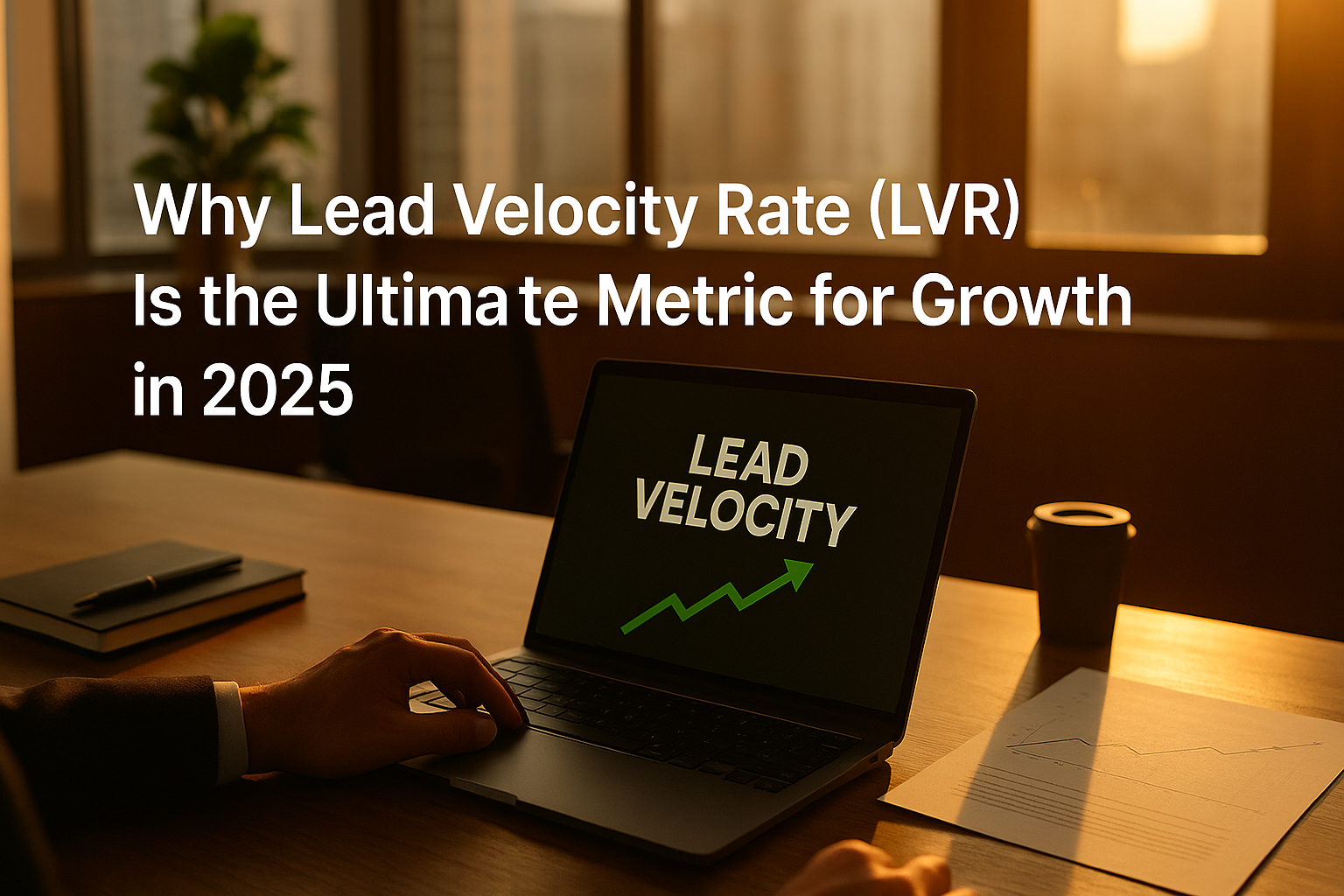Overcoming the Challenges of Selling to Civilian Agencies with Appointment Setting
Public Sector Marketing
Lead Velocity Rate (LVR) has become the defining metric for modern demand generation teams. In this blog, we explore why LVR—not MQLs or SQLs—should guide how enterprise tech marketers forecast growth, measure efficiency, and build predictable revenue in 2025.
-
Demand Generation Strategy

Introduction
For years, enterprise tech marketers have relied on metrics like MQLs and SQLs to gauge pipeline health. But in 2025, a more predictive and growth-oriented metric has taken center stage — Lead Velocity Rate (LVR). Unlike traditional KPIs that report on what already happened, LVR focuses on what’s coming next. It measures the rate of qualified lead growth month over month, giving demand generation teams real-time visibility into whether they’re scaling efficiently.
In a market where sales cycles are complex and buying committees are expanding, enterprise marketers need more than static conversion metrics. LVR offers a forward-looking pulse on pipeline momentum — helping revenue teams forecast with accuracy and act with agility.
What Lead Velocity Rate (LVR) Means for Demand Generation Marketers
At its core, Lead Velocity Rate (LVR) measures how quickly your pool of sales-qualified leads is growing over time. It’s calculated using the formula:
LVR = [(Qualified Leads This Month – Qualified Leads Last Month) ÷ Qualified Leads Last Month] × 100
Unlike MQLs, which often stop at the top of the funnel, LVR tracks progressive movement — it quantifies how effectively your team is increasing the volume of sales-ready leads entering the pipeline.
For enterprise tech marketers, this metric serves as a reality check on demand generation performance. LVR answers the question: Is our pipeline growing fast enough to sustain revenue growth next quarter?
By focusing on velocity, not just volume, marketers gain the ability to predict future growth, improve resource allocation, and align closely with sales.
Common Challenges Marketers Face
Despite its value, achieving a strong and consistent LVR is difficult in enterprise tech environments. Some of the most common roadblocks include:
Each of these factors directly impacts lead velocity — which, in turn, slows down predictable revenue growth.



.png)



.png)
%201.png)


.png)
%201.png)


.png)








Solutions That Work
To improve LVR, demand generation leaders are investing in data-driven orchestration, qualification precision, and outbound acceleration. Here are several proven ways to strengthen lead velocity in 2025:
When executed well, these strategies give enterprise marketing teams the predictive control they need to ensure their pipeline never stalls.
Actionable Steps for Marketers
Here’s a quick checklist for marketers looking to make LVR a central part of their demand generation strategy:
Audit your funnel — Identify where qualified leads slow down or drop off.
Unify sales and marketing definitions — Ensure both teams agree on what constitutes a qualified lead.
Track LVR monthly — Compare growth rates month-over-month to detect pipeline momentum early.
Diversify sourcing — Balance inbound with outbound programs to sustain lead velocity through slower quarters.
Optimize conversion workflows — Use automation to route, follow up, and schedule meetings faster.
By institutionalizing LVR as a north-star metric, marketing leaders can better forecast growth and build predictability into their revenue engine.
Comparison of Market Solutions
Some enterprise marketing teams try to manage LVR improvement internally using in-house SDR teams. Others outsource appointment setting or lead qualification to external vendors.
However, not all solutions deliver equal velocity impact. Many providers prioritize volume over quality or outsource offshore, resulting in unqualified meetings and poor data alignment.
By contrast, leading solutions emphasize precision, onshore quality, and performance-based accountability — ensuring that each engagement truly accelerates pipeline momentum.
Conclusion
In 2025, Lead Velocity Rate (LVR) isn’t just another performance metric — it’s a growth compass. It tells enterprise tech marketers whether their demand generation engine is accelerating or losing momentum.
Focusing on LVR means investing in the right data, processes, and outreach methods to ensure your pipeline grows predictably every month.
If your team is ready to build a faster, more predictable pipeline, start a pilot with Site Ascend today and see how demand generation acceleration can help you hit — and exceed — your growth targets.
Why is LVR more effective than tracking MQLs or SQLs alone?
LVR provides predictive visibility. While MQLs and SQLs measure static volumes, LVR tracks growth rate, showing whether your pipeline is expanding fast enough to meet revenue targets.
How often should marketing teams measure LVR?
LVR should be tracked monthly to identify short-term fluctuations while informing quarterly forecasts. Many enterprise teams also visualize it in dashboards to catch slowdowns early.
Can outbound programs improve LVR?
Absolutely. Outbound acceleration campaigns directly increase the number of qualified opportunities entering the funnel — sustaining or even boosting LVR when inbound flow slows.



Start your pilot campaign today and explore the full range of Site Ascend's demand generation capabilities. Experience firsthand how we can enhance your efficiency, streamline your processes, and drive growth.
RELATED